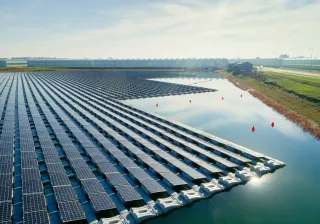The fluctuating supply of wind and solar energy forces traditional power plants to be more flexible. The two-year SmartFlex project develops smart monitoring and control tools that can be used to control power plants in rapidly changing situations. The aim is to extend the lifespan of the plants as well as to maintain high efficiency and low emissions in a reliable way.
Conventional combined heat and power (CHP) production balances the fluctuation that wind and solar power bring to the energy market. CHP plants also provide an opportunity to combust biomass residues as well as waste, thus directly reducing the use of fossil fuels. However, the plants are designed to operate steadily, or at least in a predictable way. Rapid changes in load and fuel can put a strain on the materials, generate extra emissions and reduce the efficiency of energy production.
Solutions to flexibility requirements in energy production
- The aim of the SmartFlex project is to provide power plants solutions to the flexibility requirements. We create monitoring and control tools that offer plant operators real-time process information and guidance for optimal operation of the plant. They also provide a basis for increasing remote control. At best, the tools ensure the plant's high efficiency, low emissions and good condition in varying circumstances, says Mikko Jegoroff, head of the SmartFlex project from VTT.
The goal is that the solutions produced in the project are suitable for a wide range of fluidised bed combustion power plants. In addition to CHP plants, these include numerous waste incineration plants and condensing power plants producing only electricity.
Current measurements to better use
The project is primarily concerned with measuring methods already in use at CHP plants and exploring how to make better use of them. The aim is to develop automated analysis of measurements and forecasting of conditions by combining measurement results and modelling processes.
The SmartFlex research project started in November 2019 and will continue for two years. It has a budget of EUR 1.25 million and is funded by corporate partners Fortum Power and Heat Oy, Sumitomo SHI FW Energia Oy (SFW), Inray Oy Ltd and Protacon Solutions Ltd, along with Business Finland and VTT. The same companies are also developing applications in their own parallel projects.
VTT brings to the study its expertise in modelling, materials research and power plant research and development projects, among other things. The solutions developed in the project will be tested on an operational, commercial biomass fired power plant.






